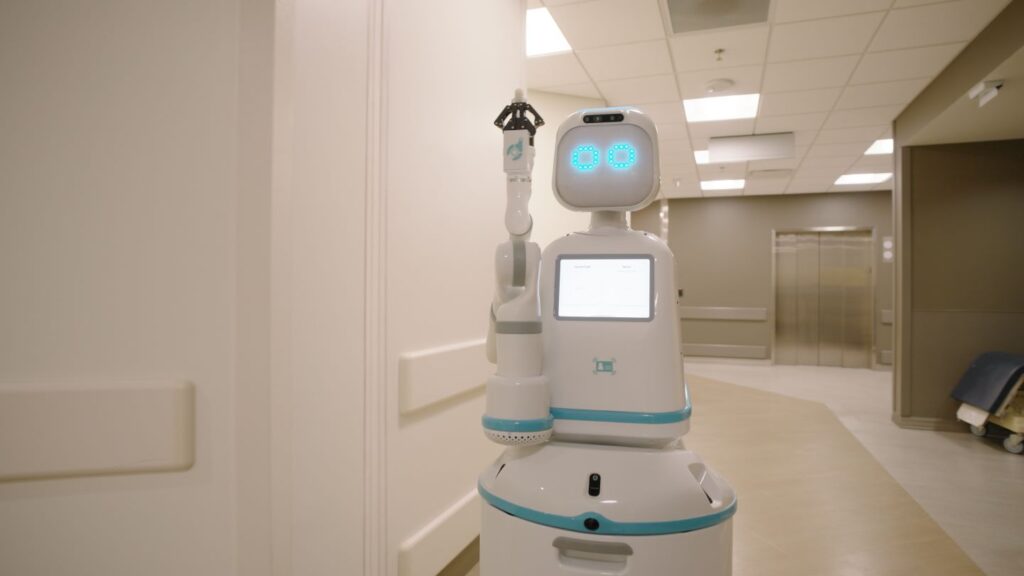
A little moxie could help nurses get through a long shift, and now a lot of Moxi — Moxi robots — could be making their way to care facilities or hospitals.
The Moxi unit, which has anthropomorphic features such as arms and LED eyes, aids in delivery tasks such as bringing residents and patients their medication or carrying equipment.
The goal is to assist nurses and caregivers with common routine or rote tasks, similar to how nonphysical artificial intelligence systems now are being incorporated into administrative roles.
Moxi’s developers, Diligent Robotics, plan to significantly expand their product reach thanks to $25 million in new funding, the company announced last week.
“Our mission is to build capable, useful teammates that support, not replace, valued nurses,” Diligent CEO Andrea Thomaz, PhD, said in a video on the company website. “We envision a future where robots work in harmony with people to improve care for all.”
The Moxi robot not only is able to lift items with its arms; it also can manipulate doors and elevators to move around, the company stated.
The company also tout’s the robot’s “social intelligence,” noting that the unit will avoid bumping into people or objects as it moves through a building.
At least one other robot in development, Fourier Intelligence’s GR-1, has weightlifting capabilities and could eventually be deployed in senior living and care to assist residents transferring to or from beds and wheelchairs. Similar to Moxi, the GR-1 units have humanoid features.
Other current uses for robotics within healthcare settings include as security, cleaning assistants, and most notably, as companions to seniors to help combat loneliness.


